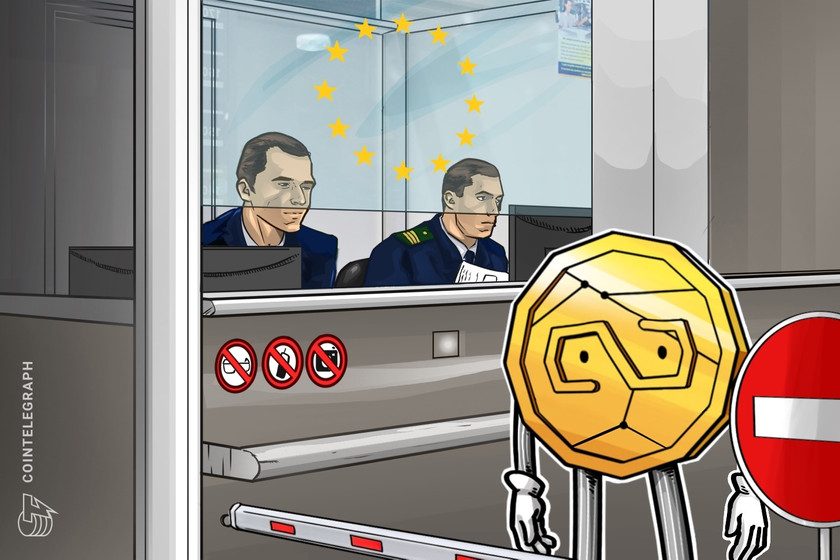Arbitrage Trading in Crypto, Explained
1.
What is arbitrage trading?
This type of trading capitalizes on imbalances in prices between markets.
Simply put, this is when an asset is simultaneously bought and sold in two markets — often because they are being sold at slightly different prices.
As an example, shares in a technology company might be on sale for $35 on the New York Stock Exchange, but available for $35.10 in London. Sure, the difference is small — but speedily bulk buying the shares at the lower price and selling them for a higher price can result in a tidy profit for an eagle-eyed trader. This concept captures the very essence of arbitrage, and it is relatively low risk when compared with other strategies.
Now, you may be wondering: How can such inefficiencies occur? Well, there are a multitude of reasons. Fluctuations in currencies can mean that stock ends up undervalued on foreign exchanges. Markets are also imperfect, and synchronicity between every exchange can be hard to achieve. Asymmetrical information between buyers and sellers is also a breeding ground for arbitrage. Alas, with such tiny profit margins, trading fees can ultimately mean that many arbitrage opportunities make little financial sense to pursue.
Arbitrage can work across a range of financial instruments beyond stocks — bringing us very nicely up to our next question.
2.
Is arbitrage trading possible in the crypto market?
Yes — it’s the same concept, but with different assets at play.
There are countless exchanges around the world now offering consumers the chance to purchase crypto. But here’s the thing: There can be significant differences in the prices on offer for digital currencies such as Bitcoin (BTC).
Such inefficiencies normally arise in regions where crypto is in high demand. One of the most oft-quoted examples is the “Kimchi Premium.” Here, local traders in South Korea ended up paying more for Bitcoin in terms of USD than they would have done in the United States, Europe and even other parts of Asia.
Zimbabwe is an African nation ravaged by hyperinflation — meaning that everyday essentials such as food and fuel can become substantially more expensive in a matter of days, even hours. There have even been examples in the past in which locals have been forced to carry entire backpacks of Zimbabwean dollars to buy groceries. In 2017, Bitcoin prices on one local exchange were almost double the prices quoted on international platforms — in part because of how affected consumers couldn’t access exchanges outside of the country.
Bitcoin has also been trading at a premium in Hong Kong amid ongoing political unrest. Back in August, traders were paying 2% more per coin than elsewhere. That same month, there was a 4% premium in Argentina as the peso plummeted following a shocking election result.
Even when extreme economic and political conditions are removed from the equation, the differences in prices between exchanges can create conditions ripe for arbitrage.
3.
What are the methods used for crypto arbitrage?
Let’s take a look at three methods of crypto arbitrage: spatial, cross-border and statistical.
Spatial arbitrage involves taking advantage of the different prices for cryptocurrency quoted on two different exchanges. Whereas Exchange A might be offering BTC for $9,500, Exchange B’s price might be set at $9,850. A trader can take advantage of this $350 divide by buying from Exchange A and selling on Exchange B — effectively moving funds from one to the other. Given the extent of decentralization in the crypto sector, such discrepancies can happen more frequently than one might think.
Cross-border arbitrage is a similar concept, but a key distinction is how the two exchanges involved in the transaction are situated in different countries. It is worth bearing in mind that this particular trading strategy can be difficult to pull off, as the reason why such premiums may exist is because consumers in high-priced countries cannot access the market rate for themselves.
Last — but by no means least — there is statistical arbitrage. This is a hi-tech strategy that usually involves mathematical modeling. It’s riskier than other techniques because it can involve using trading algorithms that capitalize on pricing discrepancies that can only exist for the briefest amount of time.
4.
Is it popular in the world of crypto?
Arbitrage has been around for centuries, and it is starting to gain traction in crypto — but opportunities can be short-lived.
The changes in supply and demand as crypto is moved from one exchange to another can have an impact on prices. Volatility in the market can mean that an arbitrage opportunity can vanish quickly — but conversely, erratic changes in prices often presents new ones. If done correctly, it is theoretically possible that a tidy sum could be made in a short space of time — and with more than 200 exchanges out there, there are bound to be price variations.
New approaches to crypto arbitrage are also emerging that don’t involve exchanges. Paxful, a peer-to-peer Bitcoin marketplace that directly connects buyers with sellers, is a platform that enables BTC to be purchased using more than 300 payment methods. Through Paxful, consumers in regions such as the U.S. and Europe are getting the chance to sell BTC to those in markets where it is harder to purchase and more expensive — with the buyer realizing a saving compared with what they would have paid on a local exchange. An interesting twist comes in how arbitrage can appear in payment methods. Whereas BTC can be cheaper to acquire using a bank transfer, a premium is often charged if gift cards are used as a method of payment — and Paxful says it gives the crypto community the chance to take advantage of these margins.
5.
Are there any risks or downsides to crypto arbitrage?
Legal and financial hurdles can make it harder to turn a profit from crypto arbitrage.
Irrespective of the type of crypto arbitrage a trader is embarking upon, the platforms they use will charge fees for transactions — and occasionally withdrawal fees. As a result of this, it is important for traders to factor in these costs to make sure that there is still a profit margin left at the end.
Cross-border arbitrage can also be made harder because of Know Your Customer (KYC) regulations — stringent requirements that mean a trader can sometimes only transact on an exchange if they provide valid government-issued identification or other documentation to verify their identity. Paxful, whose peer-to-peer marketplace is operational in most countries, says it is working to overcome these hurdles by implementing a tier-based KYC program and is working with local users to better understand their abilities in providing various forms of verification.
Another concern with exchanges surrounds the delays that can be associated with executing withdrawals. If you have a limited time frame to get funds from one platform to another, slow transfers can mean the opportunity is lost by the time a trade is completed.
It is also worth being weary of exchanges that offer exceedingly low prices for Bitcoin and other cryptocurrencies — prices that are sometimes well below the market rate. Although this may seem like an irresistible chance to make some tidy gains, it is always worth performing due diligence and checking whether an exchange is reliable first — otherwise, you could lose your capital. This could be because of a hack borne out of poor security or an inability to make any withdrawals whatsoever.
6.
So, is crypto arbitrage worth the effort?
The jury is out on this one.
People who have plenty of experience in the marketplace — and know how to identify an opportunity when they see one — normally have higher levels of success. And, although it might be possible to capitalize on a 20% spread between a buying price and a selling price, it’s prudent to ask yourself whether or not the effort of completing your transaction will be worth your time.
Remembering the legal, technical and financial hurdles — as well as factoring in the potential for fees and volatility in the crypto markets — is essential before you embark on arbitrage. However, the presence of platforms that transcend borders and connect buyers and sellers directly could inspire renewed interest in arbitrage.
Disclaimer. Cointelegraph does not endorse any content or product on this page. While we aim at providing you all important information that we could obtain, readers should do their own research before taking any actions related to the company and carry full responsibility for their decisions, nor this article can be considered as an investment advice.









